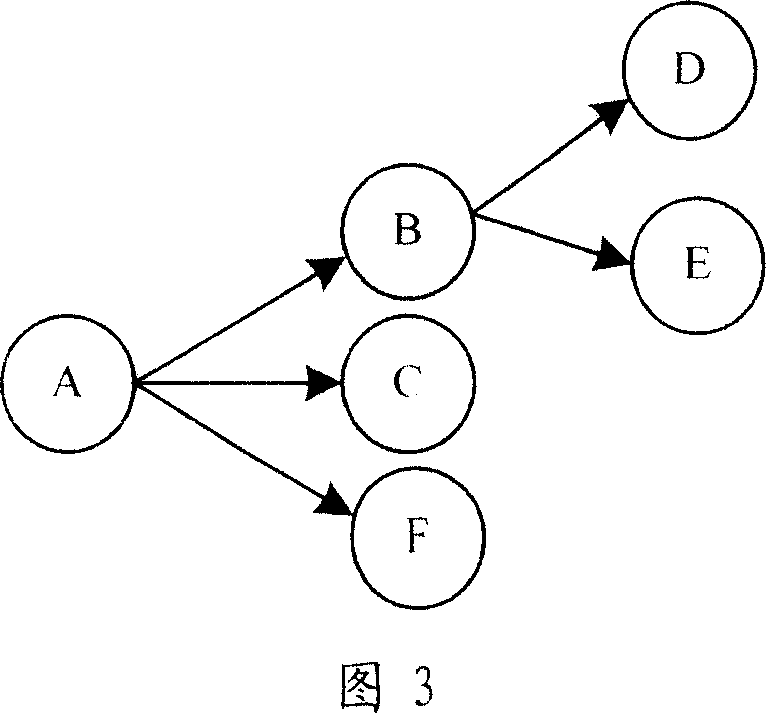Protocol recognition method and device
A protocol identification and protocol technology, which is applied in the field of protocol identification, can solve the problems of low identification efficiency, single protocol feature data, limitations of application protocol identification technology, etc., and achieve high detection efficiency and good identification effect
- Summary
- Abstract
- Description
- Claims
- Application Information
AI Technical Summary
Problems solved by technology
Method used
Image
Examples
Embodiment 1
[0035] This embodiment provides a method for fast protocol identification of received data packets. As shown in Figure 2 and 3,
[0036] Step 101, after receiving a data packet for protocol identification, match it with the matching condition determined according to the layered protocol tree, and the matching is a matching process.
[0037] Wherein, the layered protocol tree is generated according to the layered relationship of the protocol, and its layered relationship corresponds to the layered relationship of the existing layered protocol. It includes a root node and other nodes that have a certain hierarchical relationship with the root node, each node represents a protocol, and the derivation path from the root node to the other nodes contains one or more matching conditions, and the matching conditions can be The protocol characteristic data of the protocol corresponding to each node of the layered protocol tree.
[0038] For example, as shown in FIG. 3 , it is a schem...
Embodiment 2
[0044] This embodiment provides another method for fast protocol identification of received data packets. As shown in Figure 4,
[0045] Step 201, after receiving the data packet to be identified by the protocol, match it with the matching condition determined according to the layered protocol tree, specifically, match it with the detection rule information composed of the matching condition, and this matching is a matching process .
[0046] Wherein, the detection rule information is composed of matching conditions on the derivation path, and the detection rule information corresponds to each node except the root node. Specifically, the detection rule information may be represented by a regular expression. In addition, according to a certain hierarchical relationship among the nodes, the detection rule information of the nodes at the next level on the same derivation path may also include the detection rule information of the nodes at the previous level.
[0047]In step 20...
Embodiment 3
[0051] In this embodiment, an identification sequence number can also be set for each matching condition of the layered protocol tree, and corresponding detection rule information can also have a corresponding identification sequence number. The matching result may be a specific matching condition or detection rule information, or may also be its corresponding identification number. Since there may be one or more matched matching conditions, there may be one or more matched identification serial numbers. Specifically, the matched identification serial numbers may be represented in the form of an array.
[0052] In addition, an identification plane table can also be set, and the identification plane table is generated according to the layered protocol tree and matching conditions. The identification plane table includes upper-layer nodes, lower-layer nodes and matching conditions for finding lower-layer nodes from upper-layer nodes. Wherein, the upper layer node and the lower ...
PUM
 Login to View More
Login to View More Abstract
Description
Claims
Application Information
 Login to View More
Login to View More - R&D
- Intellectual Property
- Life Sciences
- Materials
- Tech Scout
- Unparalleled Data Quality
- Higher Quality Content
- 60% Fewer Hallucinations
Browse by: Latest US Patents, China's latest patents, Technical Efficacy Thesaurus, Application Domain, Technology Topic, Popular Technical Reports.
© 2025 PatSnap. All rights reserved.Legal|Privacy policy|Modern Slavery Act Transparency Statement|Sitemap|About US| Contact US: help@patsnap.com



